
The Royal Ontario Museum (ROM) is a museum of art, world culture and natural history in Toronto, Ontario, Canada. It is one of the largest museums in North America and the largest in Canada. It attracts more than one million visitors every year, making it the most-visited museum in Canada. It is north of Queen's Park, in the University of Toronto district, with its main entrance on Bloor Street West. Museum subway station is named after it and, since a 2008 renovation, is decorated to resemble the ROM's collection at the platform level; Museum station's northwestern entrance directly serves the museum.

The Field Museum of Natural History (FMNH), also known as The Field Museum, is a natural history museum in Chicago, Illinois, and is one of the largest such museums in the world. The museum is popular for the size and quality of its educational and scientific programs, and its extensive scientific specimen and artifact collections. The permanent exhibitions, which attract up to 2 million visitors annually, include fossils, current cultures from around the world, and interactive programming demonstrating today's urgent conservation needs. The museum is named in honor of its first major benefactor, Marshall Field, the department-store magnate. The museum and its collections originated from the 1893 World's Columbian Exposition and the artifacts displayed at the fair.

The American Museum of Natural History (AMNH) is a natural history museum on the Upper West Side of Manhattan in New York City. Located in Theodore Roosevelt Park, across the street from Central Park, the museum complex comprises 21 interconnected buildings housing 45 permanent exhibition halls, in addition to a planetarium and a library. The museum collections contain about 32 million specimens of plants, animals, fungi, fossils, minerals, rocks, meteorites, human remains, and human cultural artifacts, as well as specialized collections for frozen tissue and genomic and astrophysical data, of which only a small fraction can be displayed at any given time. The museum occupies more than 2,500,000 sq ft (232,258 m2). AMNH has a full-time scientific staff of 225, sponsors over 120 special field expeditions each year, and averages about five million visits annually.

World Museum is a large museum in Liverpool, England which has extensive collections covering archaeology, ethnology and the natural and physical sciences. Special attractions include the Natural History Centre and a planetarium. Entry to the museum is free. The museum is part of National Museums Liverpool.

The National Museum of Natural History (NMNH) is a natural history museum administered by the Smithsonian Institution, located on the National Mall in Washington, D.C., United States. It has free admission and is open 364 days a year. With 4.4 million visitors in 2023, it was the third most-visited museum in the United States.
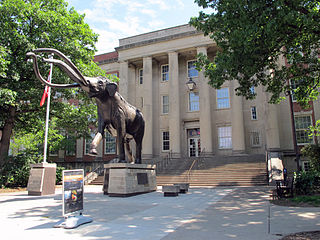
The University of Nebraska State Museum, also known as Morrill Hall, founded in 1871, is a natural history museum featuring Nebraska biodiversity, paleontology, and cultural diversity, located on the University of Nebraska–Lincoln City Campus near the corner of 14th and Vine Streets in Lincoln, Nebraska, United States. The museum houses Mueller Planetarium, a hands-on science discovery center, and the Elephant Hall, where visitors can see the world's largest articulated fossil mammoth among the collection of fossil elephants. Also featured are interactive paleontology exhibits, a dinosaur gallery, ancient life and evolution exhibits, wildlife dioramas, gems and minerals, American Indian and African exhibits, and a temporary exhibit gallery featuring rotating displays on diverse topics including photography, quilts and fine arts.

The Florida Museum of Natural History (FLMNH) is Florida's official state-sponsored and chartered natural history museum. Its main facilities are located at 3215 Hull Road on the campus of the University of Florida in Gainesville.

The Royal British Columbia Museum, founded in 1886, is a history museum in Victoria, British Columbia, Canada. The "Royal" title was approved by Queen Elizabeth II and bestowed by Prince Philip in 1987, to coincide with a royal tour of that year. The museum merged with the British Columbia Provincial Archives in 2003.

The Museum of Science (MoS) is a nature and science museum and indoor zoological establishment located in Science Park, a plot of land in Boston and Cambridge, Massachusetts, spanning the Charles River. Along with over 700 interactive exhibits, the museum features a number of live and interactive presentations throughout the building each day, along with scheduled film showings at the Charles Hayden Planetarium and the Mugar Omni Theater.

The Manitoba Museum, previously the Manitoba Museum of Man and Nature, is a human and natural history museum in Winnipeg, Manitoba, as well as the province's largest, not-for-profit centre for heritage and science education.

The Sam Noble Oklahoma Museum of Natural History is the officially designated natural history museum for the State of Oklahoma, located on the campus of the University of Oklahoma. The museum was founded in 1899 by an act of the Oklahoma Territorial Legislature. Its current building was completed in 1999 under the leadership of Michael A. Mares, who was director from 1983-2003 and from 2008-2018. The museum contains more than 10 million objects and specimens in 12 collections. The current building is a 198,000-square-foot facility with almost 50,000 square feet of public space, with five permanent and two temporary galleries and exhibits that provide an in-depth tour of Oklahoma's natural and cultural history. The remainder of the facility is dedicated to housing museum collections, laboratories, libraries, and offices. It is one of the world's largest university-based natural history museums.

The Denver Museum of Nature & Science is a municipal natural history and science museum in Denver, Colorado. It is a resource for informal science education in the Rocky Mountain region. A variety of exhibitions, programs, and activities help museum visitors learn about the natural history of Colorado, Earth, and the universe. The 716,000-square-foot (66,519 m2) building houses more than one million objects in its collections including natural history and anthropological materials, as well as archival and library resources.

The Phillip and Patricia Frost Museum of Science, formerly known as the Miami Science Museum or Miami Science Museum and Space Transit Planetarium, is a science museum, planetarium, and aquarium located in Miami, Florida, United States. The museum originally opened its Coconut Grove location across from Vizcaya Museum and Gardens in 1960. It relocated to Maurice A. Ferré Park in the downtown area adjacent to the Perez Art Museum Miami in 2017 after the closing of the Coconut Grove location in 2015.
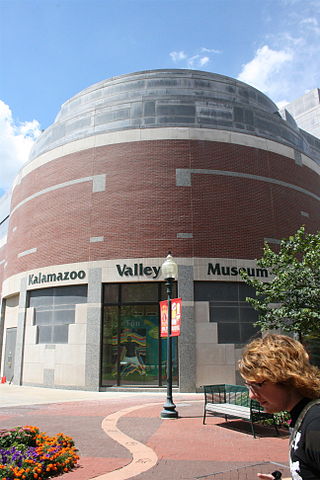
The Kalamazoo Valley Museum is a "hands-on" museum in Kalamazoo, Michigan. The museum is largely aimed at families, and focuses on science, technology, and history. The museum is operated by Kalamazoo Valley Community College, and admission to the facility is free.
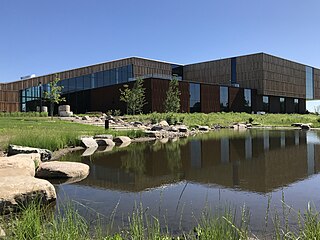
The Bell Museum, formerly known as the James Ford Bell Museum of Natural History, is located at the University of Minnesota's Saint Paul campus. The museum's current location on the Saint Paul campus opened in 2018. The Minnesota wildlife dioramas focus on animal specimens native to the state. The museum also houses the digital Whitney and Elizabeth MacMillan Planetarium. The museum is part of the university's College of Food, Agricultural and Natural Resource Sciences. The museum's former location on University of Minnesota's Minneapolis campus closed in January 2017.

The New Jersey State Museum is located at 195-205 West State Street in Trenton, in the U.S. state of New Jersey. The museum's collections include natural history specimens, archaeological and ethnographic artifacts, and cultural history and fine art objects. Exhibitions, educational activities, research programs, and lectures are also offered. The museum, a division of the New Jersey Department of State, includes a 140-seat planetarium and a 384-seat auditorium.

The University of Michigan Museum of Natural History (UMMNH) is a natural history museum of the University of Michigan in Ann Arbor, Michigan, United States. The university's natural history collections date to 1837, and have been on display since 1881. The current museum was founded in 1956, and is operated by the university's College of Literature, Science, and the Arts.
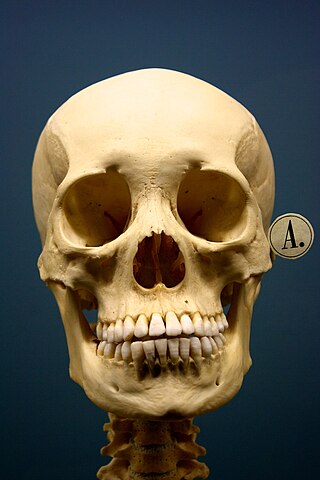
The conservation and restoration of human remains involves the long-term preservation and care of human remains in various forms which exist within museum collections. This category can include bones and soft tissues as well as ashes, hair, and teeth. Given the organic nature of the human body, special steps must be taken to halt the deterioration process and maintain the integrity of the remains in their existing state. These types of museum artifacts have great merit as tools for education and scientific research, yet also have unique challenges from a cultural and ethical standpoint. Conservation of human remains within museum collections is most often undertaken by a conservator-restorer or archaeologist. Other specialists related to this area of conservation include osteologists and taxidermists.
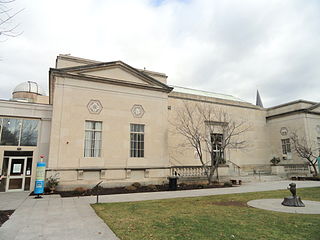
The Springfield Science Museum is located in Springfield, Massachusetts, in the United States. Founded in 1859, the museum has operated in its current building since 1899. The building has undergone two expansions, in 1934 and 1970. It is also home to the country's oldest operating projection planetarium, Seymour Planetarium.




















